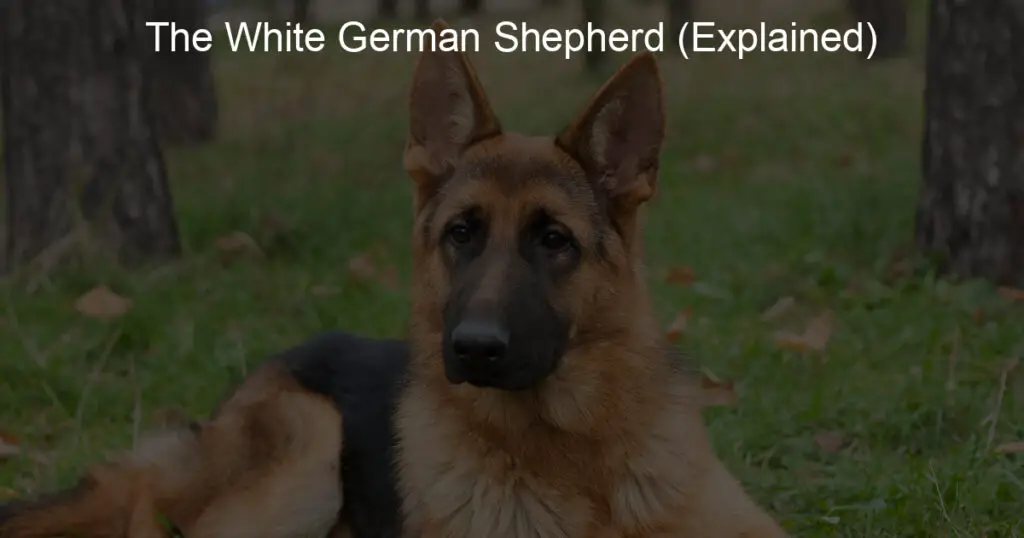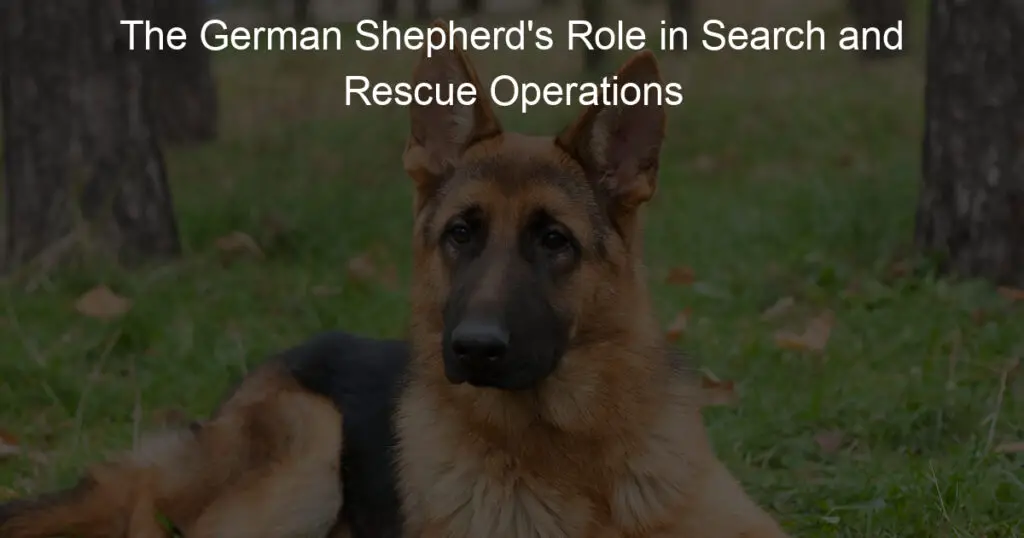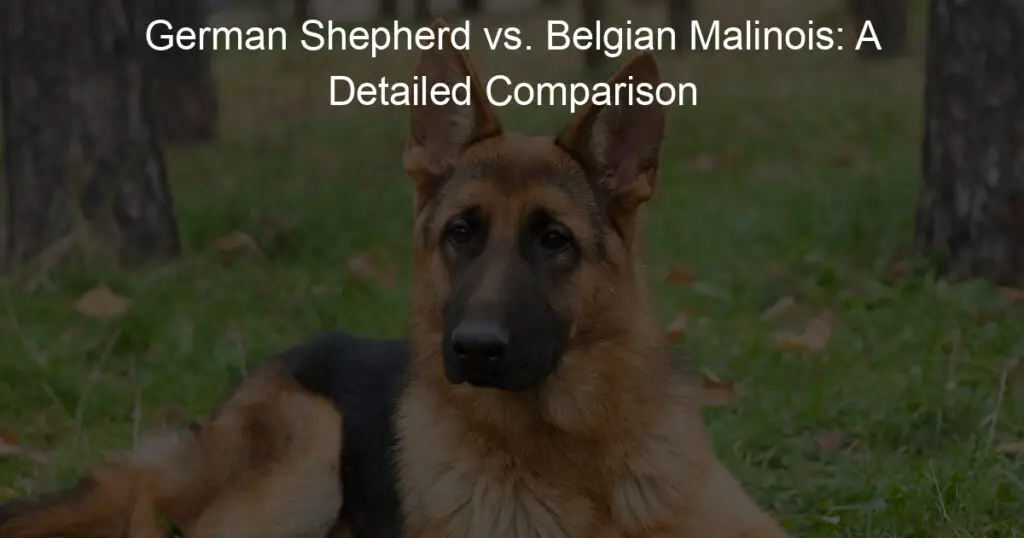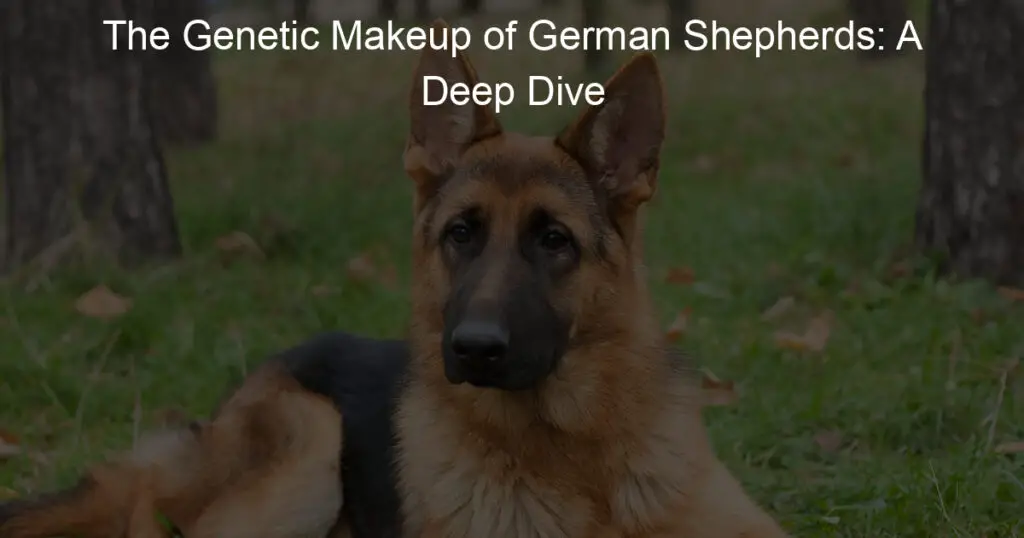The White German Shepherd is a unique and often misunderstood variation of the well-known German Shepherd breed.
With their striking appearance and similar qualities to the traditional German Shepherd, they have gained popularity among dog enthusiasts over the years.
Nonetheless, it’s essential to understand its origin, characteristics, and care requirements before choosing to adopt one into your family.
The history of the White German Shepherd dates back to the development of the German Shepherd breed itself.
With a combination of desirable traits such as intelligence, versatility, and loyalty, these dogs have been successfully utilized in various roles, including service and working dogs.
Alongside their conventional counterparts, White German Shepherds exhibit a distinguishable appearance and have faced certain controversies regarding their recognition and breeding.
Key Takeaways
- The White German Shepherd shares many traits with the traditional German Shepherd but has a unique appearance.
- This breed has a rich history and has been utilized in various roles due to their intelligence and loyalty.
- Proper training, care, and understanding of White German Shepherds is crucial for responsible ownership.
The White German Shepherd Explained
I have always admired the beauty and intelligence of the White German Shepherd. Its origin dates back to the late 19th and early 20th centuries in Germany.
As a herding breed, the White German Shepherd shares the same history with other German Shepherds.
The development of the breed was mainly orchestrated by Max von Stephanitz, a German military captain with a passion for dogs.
Von Stephanitz recognized the potential in native herding dogs and aimed to create an ideal working breed. In 1899, he came across Horand, a medium-sized, muscular dog with a strong work ethic.
Horand would be the foundation of the modern German Shepherd breed.
Since then, various breeders have contributed to the development of the breed, with some concentrating on the white variant.
Over time, the White German Shepherd gained popularity for its unique appearance, but controversy around the color arose within breeding circles. Some breed clubs considered the white coat to be a genetic flaw and disqualified it from conformation competitions.
They believed that the white coloration hindered the working ability of the breed, though this notion had no scientific basis.
However, White German Shepherds have proven to be just as capable as their colored counterparts. They are strong, intelligent, and versatile like the rest of the breed.
They excel in various fields, including police work, search and rescue operations, and as service animals.
Today, supporters of the White German Shepherd breed work tirelessly to promote the breed’s positive attributes and dispel misconceptions. They aim to establish the breed as a distinct variety within the German Shepherd family.
Through dedication and education, I believe that more people will appreciate and embrace the beauty and skills of the White German Shepherd in the future.
Characteristics and Appearance
As a lover of white German Shepherds, I can confidently tell you all about their unique characteristics and appearance.
White German Shepherds, sometimes referred to as white Shepherds, have a distinct coat color that sets them apart from their traditionally colored counterparts. Their white coat is both striking and beautiful, a key feature that many people are attracted to.
They originate from the same breed as the standard colored German Shepherds but with a recessive gene that creates the white coat.
In terms of size, white German Shepherds are generally quite large and muscular, with males standing at a height of approximately 24 to 26 inches and females around 22 to 24 inches.
Their stature is strong and commanding, showcasing both agility and strength.
The coat of white Shepherds is double-layered, with a dense top coat and a softer undercoat. This double coat is designed to protect them from harsh weather conditions, but it also requires regular grooming to stay in optimal condition.
While a pure white coat is the most common and desirable for the white German Shepherd, some variants may also have coat colors such as blue or sable.
In conclusion, the white German Shepherds have unique features such as their striking coat color, height, appearance, and double coat.
Although their appearance is what sets them apart from their standard-color counterparts, it’s important to remember that they still share the same loyal and intelligent nature that has made German Shepherds as a whole such a beloved breed.
Temperament and Personality
As a White German Shepherd owner, I can confidently tell you about their temperament and personality.
These dogs are known for their intelligence, making them highly trainable and capable of learning many tasks. They have an innate ability to understand commands, and their responsiveness to training is quite impressive.
In terms of loyalty, White German Shepherds can be fiercely devoted to their human families, often showing affection towards their owners and being keen to protect them.
They possess a strong protective instinct, which serves as a deterrent to potential threats. This quality, combined with their loyalty, makes them an excellent companion and family pet.
However, it’s important to recognize their need for social interaction.
I’ve learned that these dogs not only crave the company of their family but also require proper socialization for them to be well-adjusted and comfortable around other dogs and people.
Taking the time to expose your White German Shepherd to various environments and situations can help address this requirement.
Active and energetic dogs by nature, they love engaging in physical activities and playtime. I find that regular exercise and mentally stimulating games help keep my White German Shepherd happy and well-behaved at all times.
Meeting their activity needs can ensure a balanced temperament, especially when combined with consistent training and reinforcement.
In summary, the White German Shepherd is an intelligent, loyal, and affectionate breed featuring a protective temperament.
As an owner, it’s essential to provide proper socialization, training, and activity to ensure their well-being and happiness. By doing so, one can enjoy the loving companionship these dogs have to offer.
Training and Socialization
As an owner of a White German Shepherd (GSD), I know firsthand the importance of proper training and socialization.
In my experience, early socialization is key to raising a well-rounded and confident GSD.
Starting from a young age, I gradually expose my dog to various environments, people, and other animals. It helps to prevent issues like aggression and anxiety later in their life.
When it comes to obedience training, I find that consistency and positive reinforcement are the most effective methods.
White German Shepherds are intelligent and eager to please, which makes them relatively easy to train. However, their energy level demands regular exercise and mental stimulation.
To keep my GSD’s mind and body engaged, I incorporate activities like puzzle toys and agility training into our routine.
I also ensure they receive plenty of physical exercise by going for daily walks and playing interactive games.
It’s essential to strike a balance between physical exertion and mental stimulation in order to avoid behavioral issues stemming from boredom.
In my opinion, enrolling in a professional obedience class can provide additional support for owners. This not only reinforces the training I’ve been working on at home but also helps in further socializing my White German Shepherd.
Regular interaction with other dogs and their owners fosters good manners and adaptability in different situations.
To sum up, training and socialization are essential aspects of raising a happy and well-behaved White German Shepherd.
With consistent efforts and a commitment to their exercise needs, I can ensure my GSD becomes a well-adjusted and cherished member of my family.
Health and Care
Caring for a White German Shepherd requires attention to their overall health and well-being. One key aspect is maintaining a proper diet.
I recommend feeding a high-quality dog food that meets their nutritional needs, taking into account their age, weight, and activity level.
The appropriate weight for a White German Shepherd varies but typically ranges from 50-90 pounds depending on their size and gender.
Overfeeding can lead to obesity and health complications, so it’s important to monitor their weight.
Grooming is another essential aspect of care for these dogs, as their thick double-coat requires regular brushing to prevent matting, remove dead hair, and help manage shedding.
I advise brushing their coat at least once a week to keep it clean and tangle-free.
Additionally, White German Shepherds can be prone to allergies, so frequent grooming can help avoid any skin irritations.
In terms of health issues, one of the primary concerns for a White German Shepherd is hip dysplasia. This is a genetic condition that affects the hip joints and may lead to arthritis or mobility issues, particularly as the dog ages.
To minimize the risk of developing hip dysplasia, it’s important to keep your White German Shepherd at a healthy weight and engage them in regular, low-impact exercise.
White German Shepherds may also face other health issues, such as bloat, ear infections, and eye disorders.
As a responsible owner, it’s crucial to schedule regular vet check-ups and be vigilant in monitoring your dog’s wellbeing.
By providing proper care, addressing any concerns early on, and maintaining an appropriate diet and exercise routine, you can ensure your White German Shepherd leads a healthy, happy life.
Breed Recognition and Standards
I’ve spent quite some time researching and understanding the White German Shepherd breed. Though they might look like a separate breed, they actually aren’t.
The White German Shepherd is a variant of the standard German Shepherd breed and has a recessive gene causing its unique white coat.
Some kennel clubs recognize the White German Shepherd as a separate breed, while others don’t.
In the United States, the American Kennel Club (AKC) has accepted the White German Shepherd as a part of the breed standard since 1931.
Nevertheless, the stark contrast in color led to the belief that these dogs weren’t “authentic” German Shepherds for many years.
Due to this, some breeders specifically bred the White German Shepherd, making it rarer than the standard German Shepherd.
The United Kennel Club (UKC) acknowledges the White German Shepherd’s existence but doesn’t consider it a separate breed. Instead, they classify it as a variation of the German Shepherd breed.
This is also true for the Canadian Kennel Club, which doesn’t have a separate breed registration for the White German Shepherd.
Breeders of the White German Shepherd should adhere to specific breed standards set by the kennel clubs. It’s essential to choose a reputable breeder who follows the guidelines set by these clubs.
Conformation shows are one of the ways these breeders can showcase their dogs and ensure that they meet breed standards.
It’s worth noting that the Swiss Shepherd, also known as the Berger Blanc Suisse, is often confused with the White German Shepherd.
Although they share similarities in appearance, the Swiss Shepherd is a separate breed recognized by the Federation Cynologique Internationale (FCI).
As a fan and researcher of the White German Shepherd, I can confidently say that it’s essential to rely on reputable breeders who adhere to breed standards.
This will ensure that the White German Shepherd remains a healthy and valued part of the German Shepherd breed, despite the differences in opinions among kennel clubs.
White German Shepherd as Pets
In my experience, White German Shepherds make excellent family pets and loyal companions. Their natural beauty and presence make them outstanding in any setting.
They are intelligent working dogs with a strong herding background that enables them to thrive as family protectors and guardians.
As puppies, White German Shepherds require consistent guidance and training to become well-behaved, obedient pets.
Yet, once the puppies mature, they can become friendly and loving family dogs with a strong attachment to their human mates.
While they still possess their herding instincts, this can be managed through proper training and socialization.
These dogs are not albinos but, rather, a genetic variation of the standard German Shepherd.
Their striking white coats are weather-resistant, and they need regular grooming to maintain their good looks. Shedding might seem heavy at times, but with adequate care, it can be managed.
Feeding a White German Shepherd the right food is essential for their health, as they have specific nutritional needs due to their size and breed.
It is important to consult a vet for advice on the best diet plan for your pet.
In terms of lifespan, White German Shepherds have a relatively long life expectancy of around 12 to 14 years.
With proper care, nutrition, and attention to potential health issues, they can enjoy healthy lives as beloved members of your family.
As working dogs, they enjoy participating in activities that stimulate their minds. I find that playing fetch with a ball or teaching them new tricks not only keeps them entertained but also strengthens the bond between us.
They can be great in various roles, including herding dogs, guard dogs, service dogs, and watchdogs.
When looking to adopt a White German Shepherd as a family pet, visiting a rescue or pet store can be an ideal place to start.
It is crucial to choose a reputable breeder or rescue organization to ensure that you bring home a healthy and well-adjusted puppy.
White German Shepherds are exceptional dogs that can fit well into families with their loyal, loving, and protective nature.
With the right training and care, they will serve as faithful companions for years to come.
Common Misconceptions and Myths
One common myth about White German Shepherds is that their color is the result of a rare genetic mutation. On the contrary, their unique hue stems from a recessive gene, something I’ve researched extensively.
Both parent dogs must possess this gene for the white coat to appear in their offspring. It’s essential to note that the white coloration is not a sign of albinism or a defect; it’s simply a unique feature of some German Shepherds.
Another misconception is that White German Shepherds are far more aggressive than their traditionally colored counterparts. In reality, there’s no considerable difference in temperament between both types.
A White German Shepherd’s behavior is primarily influenced by their upbringing, training, and socialization.
As a knowledgeable owner, I can attest to the fact that these gentle giants are capable of being loyal, loving, and intelligent pets when raised and handled properly.
In terms of activity levels, some people tend to believe that White German Shepherds are hyperactive and difficult to manage.
From my experience, this isn’t true. While they do require regular mental stimulation and exercise to be happy and healthy, these requirements are consistent with those of all German Shepherds.
These dogs enjoy various activities, such as long walks, training sessions, and interactive games, which cater to their innate drive and intelligence.
Finally, there’s a false assumption that White German Shepherds have significant health issues compared to their standard-colored counterparts.
Nonetheless, these dogs are actually quite hardy and are no more prone to illnesses than other German Shepherds.
By providing them with proper healthcare, preventative measures, and nutrition, owners like me can expect their White German Shepherds to live long and healthy lives.
Frequently Asked Questions
What is the temperament of a White Shepherd?
White German Shepherds, like other German Shepherds, are known to be loyal, intelligent, and confident. They are usually good with families and children but can be protective of their owners.
Early socialization and training can help them be well-rounded dogs.
How much do White German Shepherds weigh?
White German Shepherds typically weigh between 50 to 90 pounds, with females weighing slightly less than males.
Proper diet and exercise are essential for maintaining a healthy weight.
Are White German Shepherds a rare breed?
White German Shepherds are not necessarily rare but are less common compared to their tan and black counterparts.
They are recognized as a separate breed by some kennel clubs, while others consider them a variation of the standard German Shepherd.
What is the origin of White German Shepherds?
White German Shepherds originated from standard German Shepherds with a recessive gene that causes the white coat.
The first recorded white German Shepherd was born in Germany in the early 20th century, and white German Shepherds began appearing in the United States around the 1960s.
What causes the white coat in German Shepherds?
The white coat in German Shepherds is caused by a recessive gene. This means that a puppy can be born with a white coat even if neither parent has one, as long as they both carry the gene.
Regardless, breeding two white German Shepherds will result in a greater chance of having white puppies.
How do White German Shepherds differ from all-black Shepherds?
The primary difference between White and all-black German Shepherds is the coat color, which is caused by a different recessive gene in each.
This variation in coat color does not affect their temperament or health. Both White and all-black German Shepherds share the same breed characteristics, such as intelligence, loyalty, and protective instincts.















